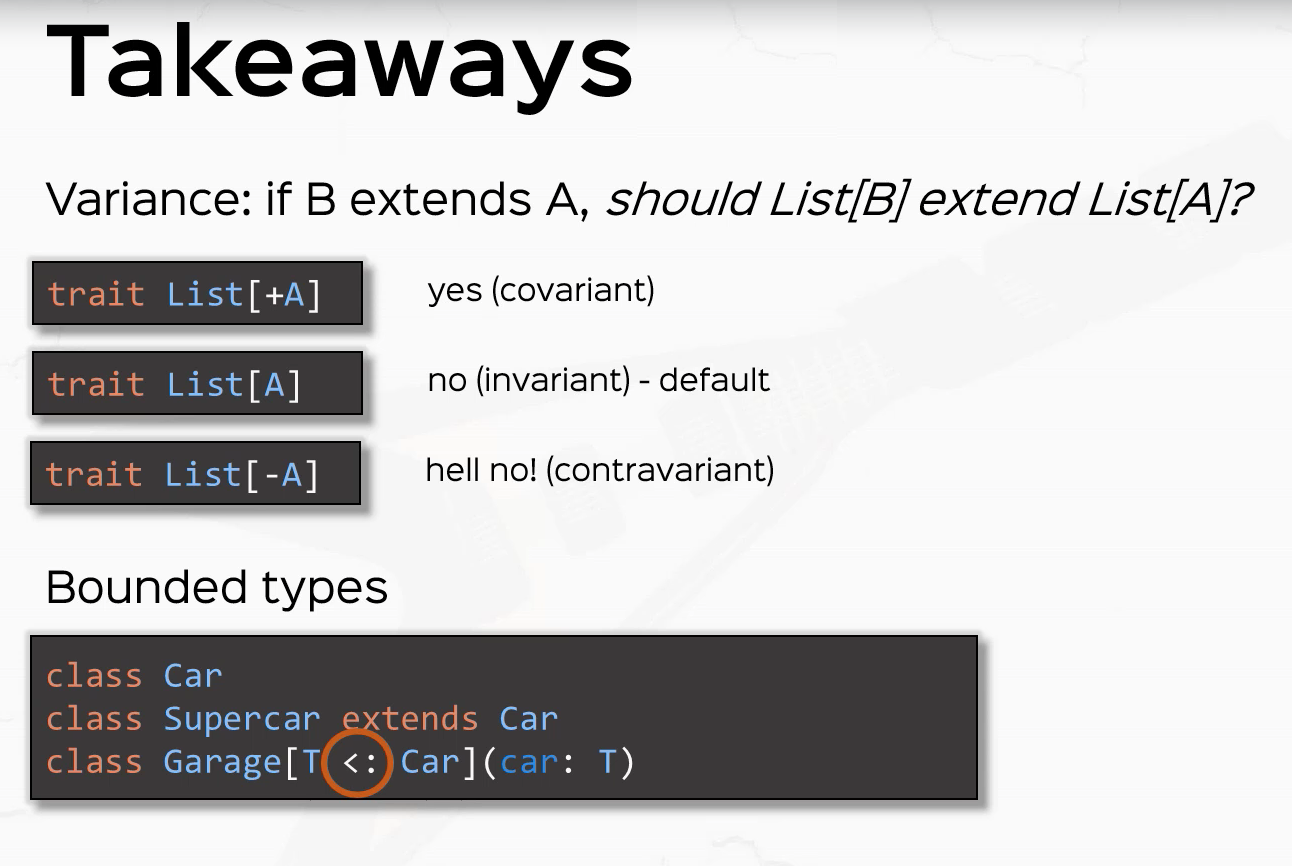ScalaSchool
Variance in parametrized types
Given A <: B (i.e. A is a subtype of B)
- If
C[A] <: C[B],Cis called covariant - If
C[A] >: C[B],Cis called contravariant - Otherwise if there is no subtype relationship between
C[A]andC[B]Cis called invariant
class C[+A] { ... } // Is how we define C to be covariant
class C[-A] { ... } // Is how we define C to be contravariant
class C[A] { ... } // Is how we define C to be invariant. Notice this is the default
Examples:
- Should
List[T]be covariant or contravariant? Well givenCat <: Animalshould I be able to use aList[Cat]anywhere aList[Animal]is used? Yes, that makes sense intuitively, and it turns out to be correct.
This means List[Cat] <: List[Animal]. So List[T] follows with subtype arrangement of T. Therefore List is
covariant.
- Ok should
Array[T]also be covariant? Turns out no! Why? Well arrays are mutable, so if Array[T] was covariant you could do:
val bobCat = Array[Cat](cat1, cat2, cat3)
val sally: Array[Any] = bobCat
sally(0) = "string" //now we have just added a "string" val to our list of cats! Bad!
So for Arrays we need to make them invariant.
- So in general mutable containers are
invariantand immutable containers arecovariant
Variance for function parameters and return types
Let’s consider variance of function types with respect to their parameters and return types.
If P1 <: P2 and R1 <: R2, then should P1 => R1 <: P2 => R2 be true?
Nope! Here is why, say:
f1 = Cat => Carf2 = Animal => Vehicle
So is Cat => Car :< Animal => Vehicle? Well if it was then I could use f1 anywhere I use f2. But I can’t replace f2(animal) with f1(animal). Therefore Cat => Car <: Animal => Vehicle is out!
Ok what about If P1 <: P2 and R1 <: R2, then should P2 => R1 <: P1 => R2 be true?
Yes!
f1 = Animal => Carf2 = Cat => Vehicle
Can I use f1, anywhere f2 was used? Yes! f2 takes an Cat and returns a Vehicle. Does this work for f1? Yep
a call f2(cat) can be replaced with f1(cat). f1(cat) returns a car. That matches the expected type for f1!
Therefore Functions must be contravariant in their argument types and covariant in their result types, e.g.
Summary
class Seq[+T] //Lists etc. are covariant, and can be because they are immutable
class Array[+T] {
def update(x: T): Unit
} // variance checks fails
trait Function1[-T, +U] {
def apply(x: T): U
} // Variance check is OK because T is contravariant and U is covariant
Find out more about variance in lecture 4.4 and lecture 4.5
